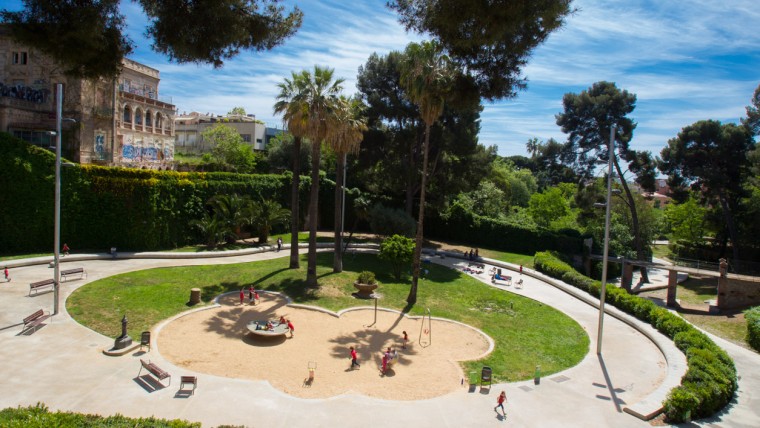
This park, located between Carrer de Ràfols, Riera de les Monges and Ronda de Dalt in the Sarrià neighbourhood, boasts an accessible children’s play area, pedestrian, cyclist and skating circuits and drinking-water fountains. It has very good connections with Parc de Collserola through the Jardins de Can Sentmenat and Parc del Castell de l’Oreneta.

History
This green space is the result of the urbanisation of what is popularly known as the Torrent de les Monges (Nuns’ Stream). The stream is named after the Sisters of the Sacred Heart Convent in Sarrià, which it runs through. It was once connected to the local stream system, flowing into the Riera Blanca.
The park has two spectacular attractions: the size and the height of its trees, particularly noticeable when you look down, thanks to the steep slopes and different levels.
Civil engineering work to drain and channel the rainwater, by naturalising the stream bed and turning it into a slalom-like walkway, has created a strong reminder of the water. The park is dedicated to the speaker of the Catalan Parliament between 1995 and 1999.
-
- Phone number
- Tel.: 010
-
- Titularity
- Public center
- Address:
- C Ràfols, 10
- Districte:
- Sarrià-Sant Gervasi
- Neighborhood:
- Sarrià
- City:
- Barcelona
Timetable
| Periode | Dies | Hores |
|---|---|---|
Horari d'hivern de l'1 de novembre al 31 de març |
Cada dia | de 08.00 h a 19.00 h |
Horari d'estiu de l'1 d'abril al 31 d'octubre |
de 08.00 h a 21.00 h |
aproximada, en funció de
l'horari solar (tanquen
quan es fa fosc, al capvespre)
Situat entre els carrers Ràfols, Riera de les Monges i Ronda de Dalt.

